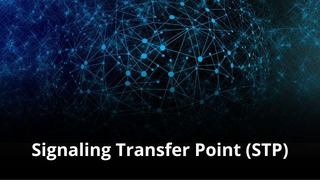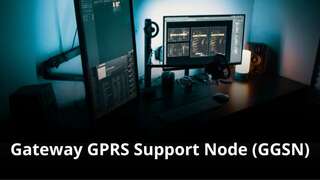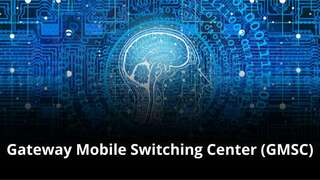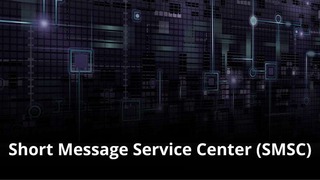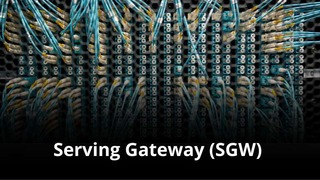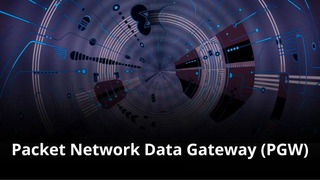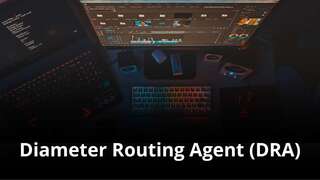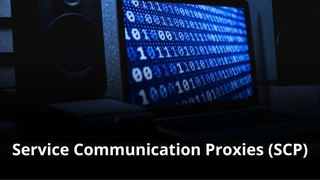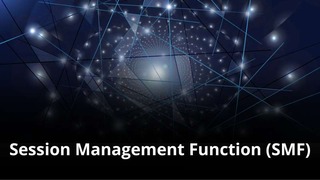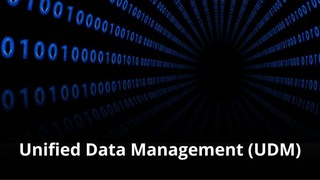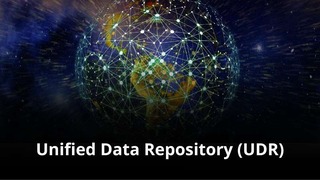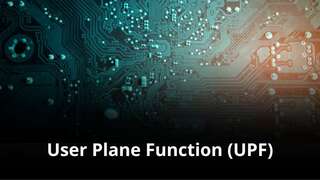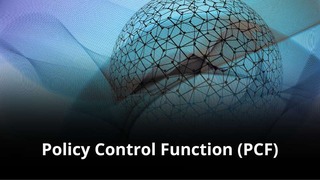Introduction about the Access and Mobility Management Function (AMF)
The Access and Mobility Management Function (AMF) is a critical and foundational component within the architecture of the 5G Core (5GC) network. Understanding its purpose is essential for comprehending how 5G networks manage the control plane signaling, user registration, security, and seamless mobility across diverse access technologies (e.g., 5G NR, 4G LTE, and Wi-Fi). This entity acts as the central, authoritative controller for all signaling traffic, registration state, and security context for all devices (User Equipment or UE) across the 5G system. You will find it crucial for any operator aiming to uphold session management, ultra-reliable low-latency communication (URLLC), and network slicing in their 5G environment.What are the details of a Access and Mobility Management Function (AMF)?
- History and Evolution of the Access and Mobility Management Function
- Core Utility and Functionality of the AMF
- Technical Integration and Data Model
- AMF Ownership for MVNOs and IoT Companies
- Organizational Impact of AMF Ownership?
- Redundancy and High Availability
- Impact of 6G, Network Slicing, and Cloud-Native Architectures on the AMF
- Frequently Asked Questions about the AMF
- Summary
History and Evolution of the Mobility Management Function (AMF)
The concept of a centralized control-plane function was inherited from the 4G network’s Mobility Management Entity (MME). With the transition to 5G New Radio (NR), the MME’s functions were disaggregated and refined. The Access and Mobility Management Function (AMF) was introduced as the successor, inheriting the mobility, security, and registration tasks, while offloading session management to the Session Management Function (SMF). This architectural split is central to the 5G vision. The AMF’s original design focused predominantly on supporting multi-access (5G, 4G, Wi-Fi), efficient handling of massive IoT devices, and enabling Network Slicing. Its evolution reflects the industry’s shift towards a flexible, cloud-native core network built on Service-Based Architecture (SBA).
Core Utility and Functionality of the AMF
What is the AMF Used For?
The Access and Mobility Management Function (AMF) is the definitive source for control-plane logic, UE state information, and access control within the 5G core network. Its primary purpose is to receive and process all non-access stratum (NAS) signaling from the UE. It is crucial for managing user registration, authentication, security context, and the routing of signaling traffic to the appropriate network functions. Deploying an AMF is necessary to ensure users can connect, register, authenticate, and seamlessly maintain connectivity while moving across the 5G access network.
Key Functions of the Access and Mobility Management Function (AMF)
Lets investigate the core functions of the Access and Mobility Management Function (AMF) to understand its critical role in 5G network operations:
- Registration and Connection Management: Manages the process of a UE connecting to the network (Registration) and tracks the UE’s connection status (CM-IDLE, CM-CONNECTED).
- Authentication and Security Context: Initiates and manages the 5G authentication process by communicating with the Authentication Server Function (AUSF) and establishing the necessary security context and keys with the UE.
- Non-Access Stratum (NAS) Signaling Termination: Receives and processes all control-plane messages from the UE (Registration Request, Mobility Update, Paging Response).
- Network Function (NF) Selection and Routing: Selects the appropriate Session Management Function (SMF) and User Plane Function (UPF) for the UE’s data session based on policies and slice information.
- Access Type Management: Handles mobility procedures across different access technologies (e.g., switching from 5G NR to 4G LTE or vice-versa) and anchors the control plane.
- Paging and Reachability Management: Tracks the location of UEs in the CM-IDLE state and coordinates the paging message across the appropriate gNodeB (5G base station) areas when downlink data arrives.
- Network Slice Selection (NSSAI): Uses the S-NSSAI (Single Network Slice Selection Assistance Information) provided by the UE to select and route signaling to the network functions serving the requested slice.
- AMF Pool and Load Management: Participates in AMF Pool mechanisms to distribute load and coordinates handover procedures when a UE moves between different AMF service areas.
- Inter-MME/AMF Mobility: Handles the signaling procedures for a seamless handover of the UE’s control-plane context between a 4G MME and the 5G AMF (via the N26 interface) or between two AMFs.
Technical Integration and Data Model
The Access and Mobility Management Function (AMF) is the central point for control signaling in the 5G core’s Service-Based Architecture (SBA). Examine its key integration points:
- gNodeB/eNodeB: Connects over the N2 interface for all control-plane signaling with the access network.
- SMF (Session Management Function): Interacts over the N11 interface (service-based, Nsmf) to request session setup, modification, or release.
- AUSF (Authentication Server Function): Communicates over the N12 interface (service-based, Nausf) to request and complete user authentication.
- UDM (Unified Data Management): Interacts over the N8 interface (service-based, Nudm) to retrieve subscriber data, access restrictions, and mobility policies.

Technical Data Model and Key Interfaces
The AMF employs a structured Technical Data Model to store the temporary and permanent UE context required for access and mobility. This context includes the UE’s 5G Globally Unique Temporary Identifier (5G-GUTI), the security keys and ciphering algorithms, and the tracking area list. Key interfaces utilized by the AMF are primarily based on the HTTP/2 protocol and the Service-Based Architecture (SBA):
- N1: The logical interface between the UE and the AMF, carrying Non-Access Stratum (NAS) signaling messages.
- N2: The control-plane interface between the AMF and the access network (gNodeB), using SCTP/GTP-C for access management.
- N11/N8/N12 (Service-Based Interfaces): AMF serves as a client to other 5GC Network Functions (SMF, UDM, AUSF), communicating via the SBA using HTTP/2 over a Service Mesh.
AMF Ownership for MVNOs and IoT Companies
Why Own a AMF?
For an MVNO or an IoT company, owning a dedicated Access and Mobility Management Function (AMF) (often a virtualized or containerized instance) is a strategic enabler. This function is the access gatekeeper and controls all signaling. Owning it allows these companies to gain significant control over access policies, security procedures, specialized registration processes (e.g., for massive IoT), and the ability to steer traffic to specific SMF/UPF slices. This level of customization and control is essential for deploying specialized services (like URLLC for enterprise or dedicated IoT platforms) that require tailored access behaviors, which is not possible when fully relying on the host MNO’s AMF.
Advantages and Disadvantages of PCRF Ownership
Direct Control over UE registration, security, and customized access policies.
Customized Signaling and registration processes optimized for specific IoT use cases (e.g., power saving).
Enhanced Security and authentication mechanisms tailored for high-security enterprise or regulatory compliance.
Network Slice Isolation for dedicated services, ensuring performance guarantees for high-priority traffic.
Future-Proofing by integrating new 5G features (e.g., advanced mobility) without MNO delays.
High Initial Investment in specialized, high-availability, cloud-native platform infrastructure.
Operational Complexity requiring expertise in 5G SBA (HTTP/2, REST), security, and control-plane scaling.
Maintenance and Upgrade Costs for a critical, evolving, 24/7 control system
Interconnection Challenges with the host MNO’s radio network (gNodeB) over the N2 interface.
Lack of Legacy MME/2G/3G support often requires additional interworking elements.
Organizational Impact of AMF Ownership
Analyzing the organizational impact of owning an Access and Mobility Management Function (AMF) across various business units.
Operational Impact: Requires the establishment of a dedicated technical team proficient in 5G signaling (NAS), container orchestration (Kubernetes), security context management, and cloud-native operations. This team will monitor AMF performance, manage pool capacity, and handle all registration/mobility troubleshooting. Recruitment of personnel specializing in 5GC control plane is mandatory.
Financial Impact: Evaluate the significant capital expenditure (CapEx) for the initial software licenses and the underlying cloud/virtualization platform (e.g., hardware and cloud subscriptions). High ongoing operational expenditure (OpEx) will cover highly skilled staff salaries, service mesh licensing, and continuous system security patching
Commercial Impact: Leverage the AMF’s Network Slicing capabilities for highly flexible and differentiated service offerings (e.g., selling low-latency slices to industrial clients). This supports faster deployment of security and access policies than relying on a host MNO.
Technical Impact: Mandates the implementation of detailed protocols for managing the UE security and mobility context database integrity. The company must own the end-to-end responsibility for system stability, security patching, and ensuring correct interfacing with the gNodeB (N2) and the other 5GC NFs (SBA).
Redundancy and High Availability

The Access and Mobility Management Function (AMF) is a central control point; therefore, Redundancy and High Availability (HA) are absolutely critical requirements. This is inherently addressed in 5G through AMF Pooling. Implement a fully redundant system architecture, typically achieved through clustered, geographically redundant AMF instances orchestrated via a cloud platform (e.g., Kubernetes). This design ensures service continuity and seamless mobility by allowing UEs to failover and re-attach to a healthy AMF within the pool. Rigorous state synchronization mechanisms are employed between AMF instances and the UDM to prevent loss of UE security and mobility context.
Impact of 6G, Network Slicing, and Cloud-Native Architectures on the AMF
AMF’s Transition
The AMF is a pioneer of the cloud-native, Service-Based Architecture (SBA). The Network Slicing capability it enables is arguably its most significant contribution, allowing a single physical core to host multiple logical networks. As the network evolves toward 6G, the AMF’s core functionality (access and mobility control) will remain, but it will become even more distributed and decentralized.
6G, Network Slicing, and Cloud-Native Architecture
In the 6G core, the AMF is expected to evolve into a more flexible, AI-driven control entity, potentially adopting concepts like “Micro-AMFs” deployed closer to the edge. This will support truly instantaneous access for new device types and extremely low-latency requirements. Its role will continue to focus on access-agnostic management, handling not only 5G NR and Wi-Fi, but also future 6G access technologies. The fundamental role of securely managing UE access and mobility, as performed by the AMF, will always remain necessary, but implemented with greater distribution, automation, and reliance on virtualization technologies.
Frequently Asked Questions about Access & Mobility Management Function (AMF)
1. What is the main function of the AMF?
The primary function is to manage all control-plane signaling for access, registration, mobility, and security context establishment for UEs in the 5G network.
2. What is NAS signaling?
Non-Access Stratum (NAS) signaling is the control information (e.g., Registration Request) exchanged directly between the UE and the AMF over the N1 interface, separate from the radio access signaling.
3. How does the AMF enable Network Slicing?
The AMF uses the UE’s requested S-NSSAI to select the appropriate SMF and other network functions, effectively directing the UE’s signaling and data path into the designated network slice.
4. What function did the AMF replace?
The AMF is the successor to the 4G Mobility Management Entity (MME). Unlike the MME, the AMF separates session management and user plane functions.
5. What protocol is used on the 5GC service bus?
The AMF and other 5GC Network Functions primarily use HTTP/2 over the Service-Based Interface (SBI) for internal communication, making the core network RESTful and cloud-native.
Summary
The Access and Mobility Management Function (AMF) is the central, authoritative controller that securely manages all access, registration, security, and mobility signaling in the 5G Core (5GC). Acquiring and operating a dedicated AMF offers MVNOs and IoT companies significant advantages in Network Slicing, service customization, and direct control over access policies. However, this decision involves substantial complexity and requires specialized expertise in cloud-native operations and 5G control-plane signaling. As the blueprint for next-generation control systems, the AMF’s conceptual role—that of the master access and mobility controller—is fundamental to the future of mobile communication.
